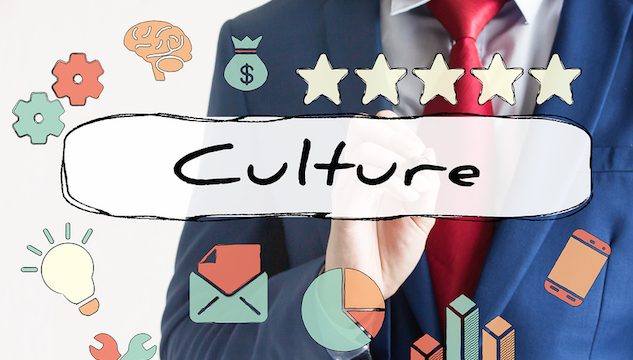A shared set of beliefs, values, and group behaviours of an organisational culture can give all stakeholders a sense of purpose. This purpose helps customers, employees, and organisations to be truly connected. However, culture can be a significant barrier in digital transformation as it impacts the pace, effectiveness and adoption of new processes. Likewise, technology can be highly beneficial, but it is useless without the education and empowerment of employees.
Digital transformation is a disruptive process and changes may be unsettling for employees, leading to anxiety and resistance. How an organisation addresses concerns around upskilling, new roles, and machine collaboration will shape the success of an organisation’s digital initiatives. Fostering a culture that is progressive and agile may be a shock to some employees; however, such a culture can deliver benefits to the whole organisation.
Adopting a digital culture to break down silos and centralise the customer is critical to becoming digitally minded. An organisation needs informed and adaptable employees, immersed in a culture that is agile and encourages calculated risks.
Creating and caring for a digital culture is intentional and takes effort and focus; it does not happen by accident. There are several measures an organisation may take to support the workforce to move toward a digital culture including:
1. Understand the workforce. Understanding the digital knowledge and skills of the workforce will highlight skills and knowledge gaps, feeding into training and communication programs supporting staff through the transition process and beyond.
2. Time. Employees need time to adjust to change and adopt new technology. By not rushing into implementation, employees will have time to get used to digitalisation, learn to experiment and build on their successes.
3. Communication. One of the main ways to address the fear and anxiety which comes with change is communication. Clear, open and visible communications can demystify the digital transformation journey. Using a variety of communication methods can reassure and engage your workforce.
4. Engagement. Each employee needs to understand where they fit in the digitalisation process. Bringing consumer-like experiences into the workplace may shorten transition periods and increase acceptance of digital tools and smart machines. For people to change their habits they need to appreciate the added value, such as making their tasks easier.
5. Leadership and vision. While the leadership team needs to drive cultural change, they also need to engage employees and encourage creativity, similar to what is often experienced in a start-up. Feeling comfortable to take risks and try new things starts with leaders modelling such behaviour, trusting their employees and encouraging collaboration, and treating any failures as learning experiences. The more leadership teams focus on digital transformation, the more the workforce becomes used to it.
Through engagement, collaboration, and communication, digital culture can be an evolution rather than a revolution. Once an organisation has a digital culture, employees will lead the way and become motivated and engaged to use the new tools and processes, which will inevitably result in others following. Digital transformation is, at its heart, an exercise in the development of people, nurturing a culture for digital change while developing a workforce with a growth mindset.
Martin de Martini, Co-founder and CIO, Y Soft










